Drawing Trees Week 2: Scars, Bark and Branching
March 3, 2022

Ink, pastel and white gouache on green paper
This week we’ll get close up and look at more of the textures and structural details of trees. So we’ll look at their natural marks, bark patterns and branches, and also at healed wounds.
If you are fortunate enough to have a garden with trees you may like to embark on a project discovering its marks and structures. Perhaps start with the trunk and it’s bark and any scars from lopping or pruning, and observe how the patterns of bark change where a branch develops.
See how many small branches emanate from the stubs left behind when a branch is cut off. Sometimes this leads to huge thickenings as in the drawing of the Spanish Chestnut trunk above.
If you don’t have a garden try finding a tree nearby or work from photographic reference.
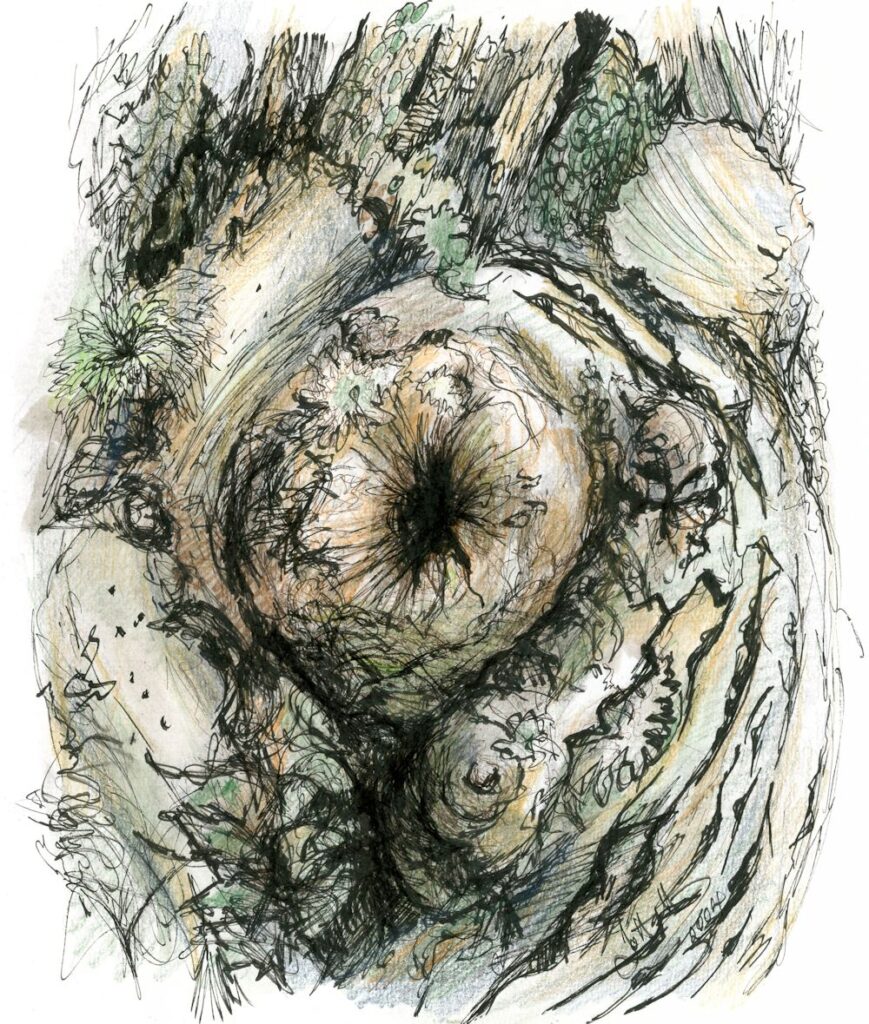
Ink and coloured pencil
Years before this became our apple tree, a major limb had been excised and the scar overgrown with lichen and moss.
A feast of texture!
Project : Make visual notes of at least two of the following in your sketchbook and then make a considered drawing of a part of the tree that sustains your interest. It’s not a comprehensive list so feel free to add your own ideas.
1.Branches: observe whether these follow any sort of pattern, or in the case of palm or banana trees how do the leaves emerge and what happens to the dead leaf bases?
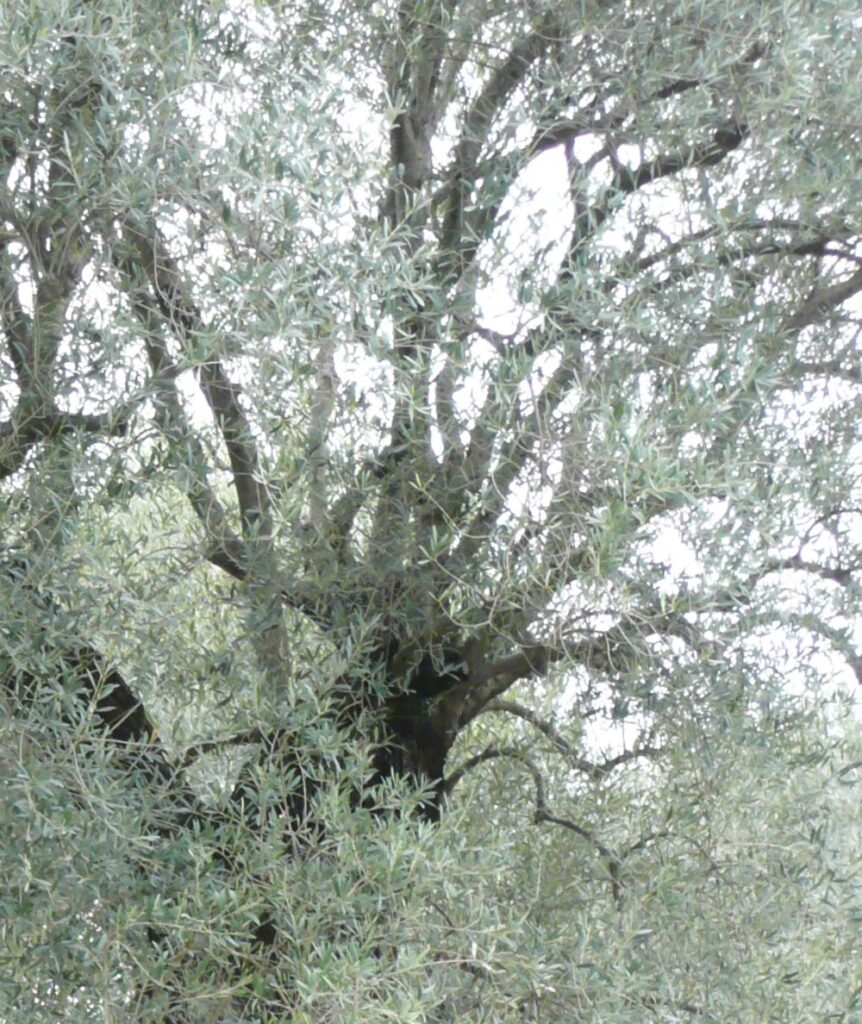
Photo by Jo
2.Bark patterns and marks as they appear on the main trunk and branches; also some trees shed bark pieces, some of the pines do and pieces can be gathered and drawn indoors. More detailed studies of these can appear quite abstract.
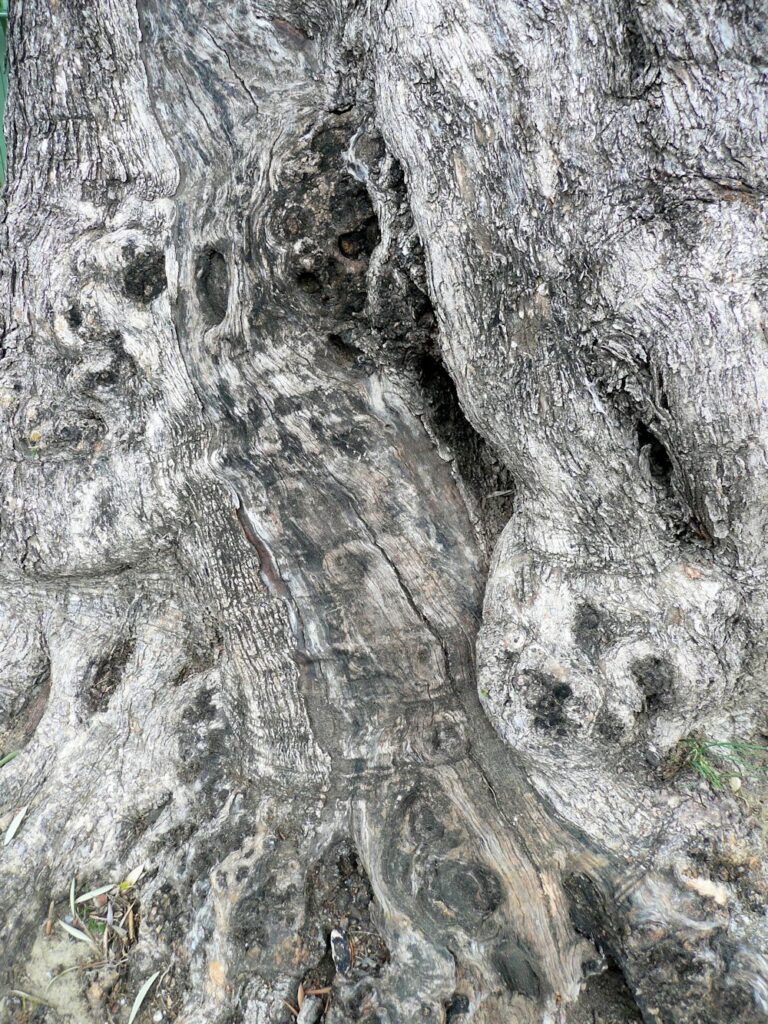
Photo by Jo
3.At branch points sketch how the pattern of the bark changes where new growth emerges
4.Scars and new growth
5.Exposed roots at the base of the trunk
6.Make notes of other life like lichens and moss that cover the bark in places introducing different textures or patterns.
You will have gained a huge amount of information about the tree in this drawing exercise and have found mark making equivalents for some of the patterns and textures observed on the way. Finally make a drawing of a tree, choosing not to draw the whole tree this time, but a part you find particularly interesting.
Your drawings:
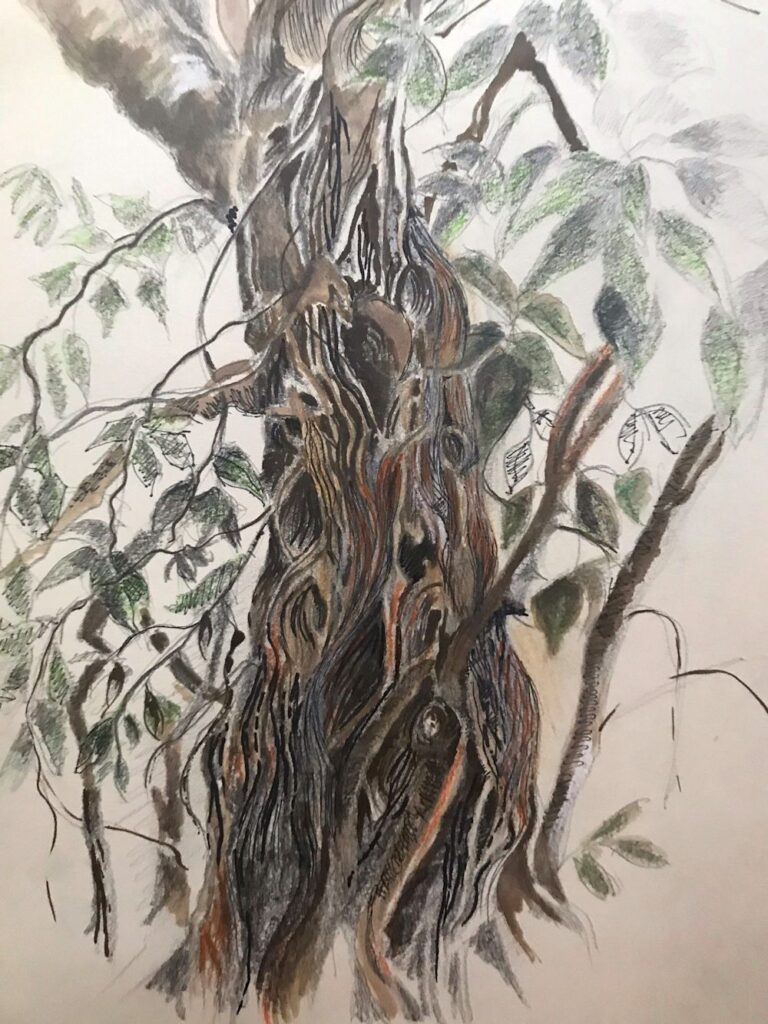
Mixed media drawing by Sarah
6B pencil, black ink and walnut ink, pastel pencil

Pencil by Sarah
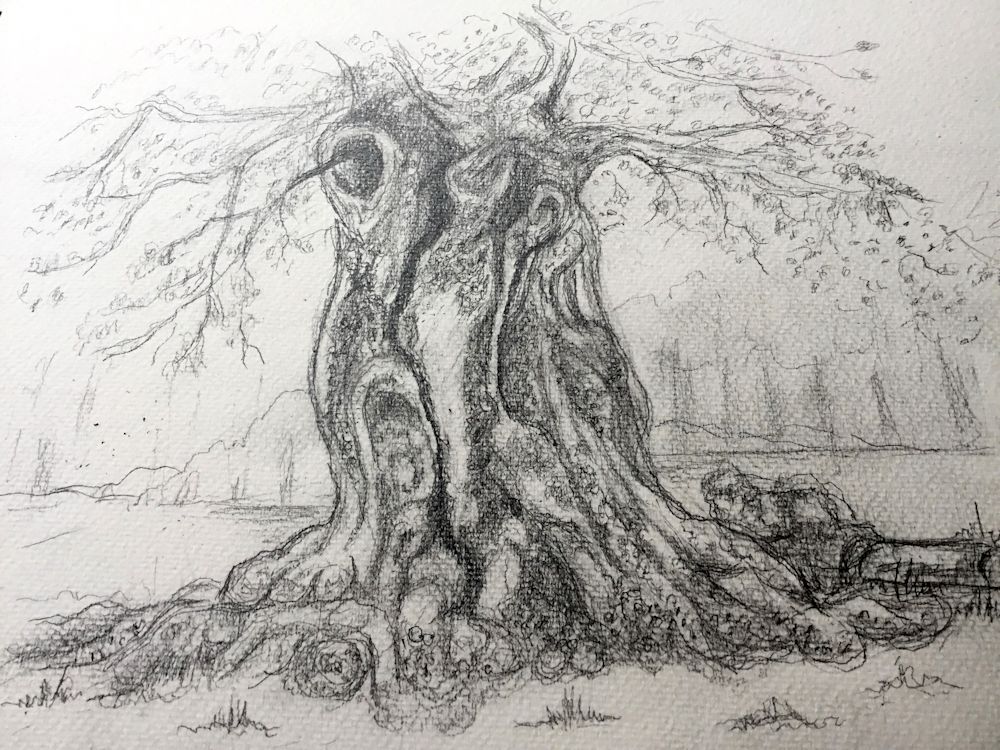
Pencil by Ann
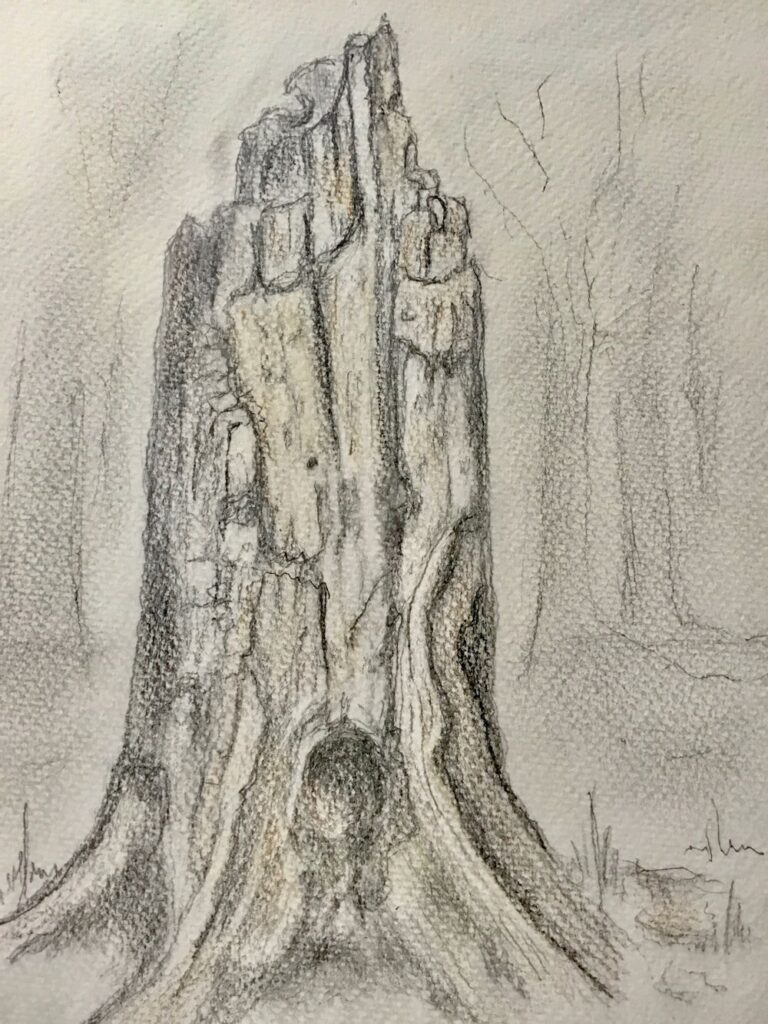
Pencil by Ann
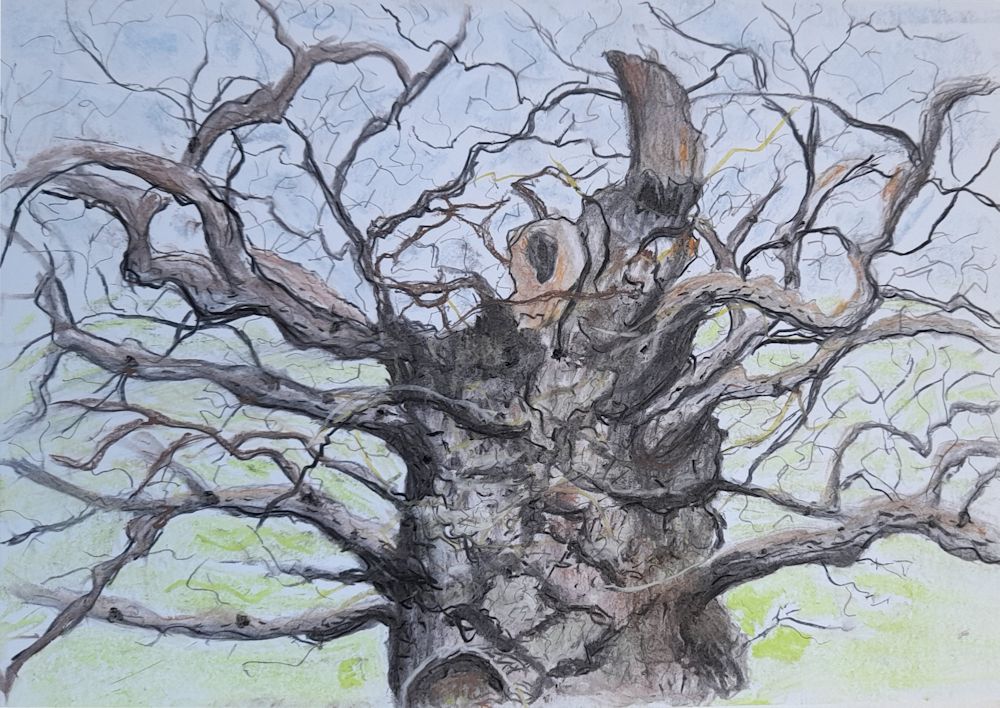
by Maricarmen
How surreal: I feel the oak is watching us!
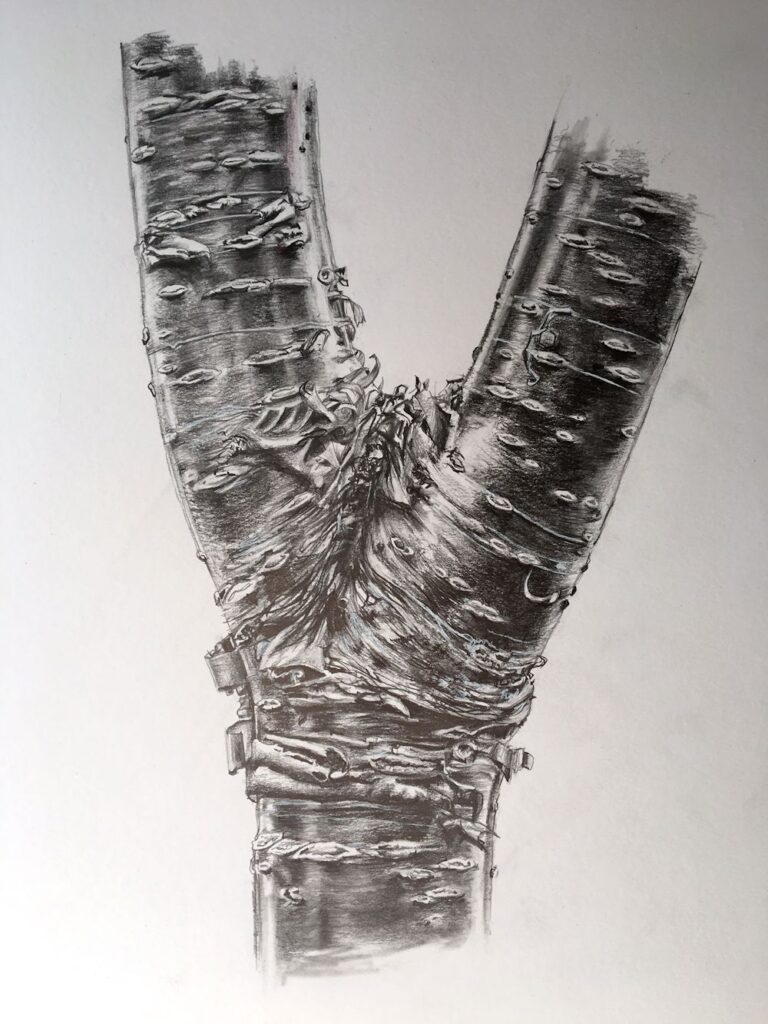
Graphite on A3 paper by Maryon

Pencil by Anne C
Heather has drawn from the same reference in three different media!
See below;
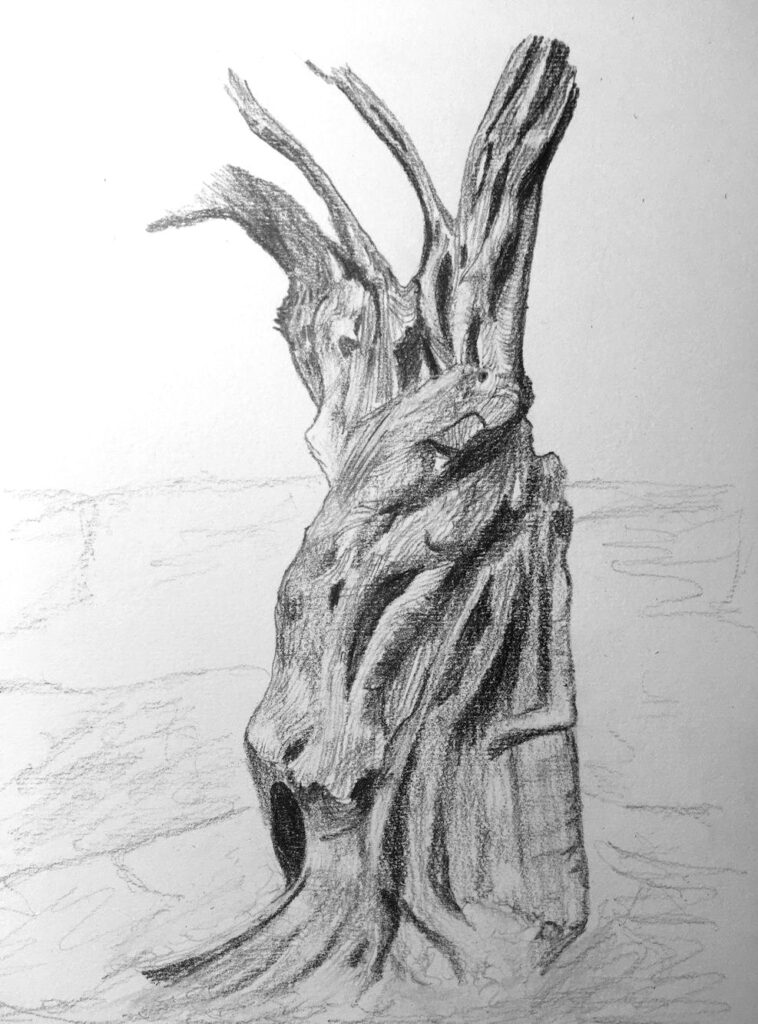
Pencil by Heather
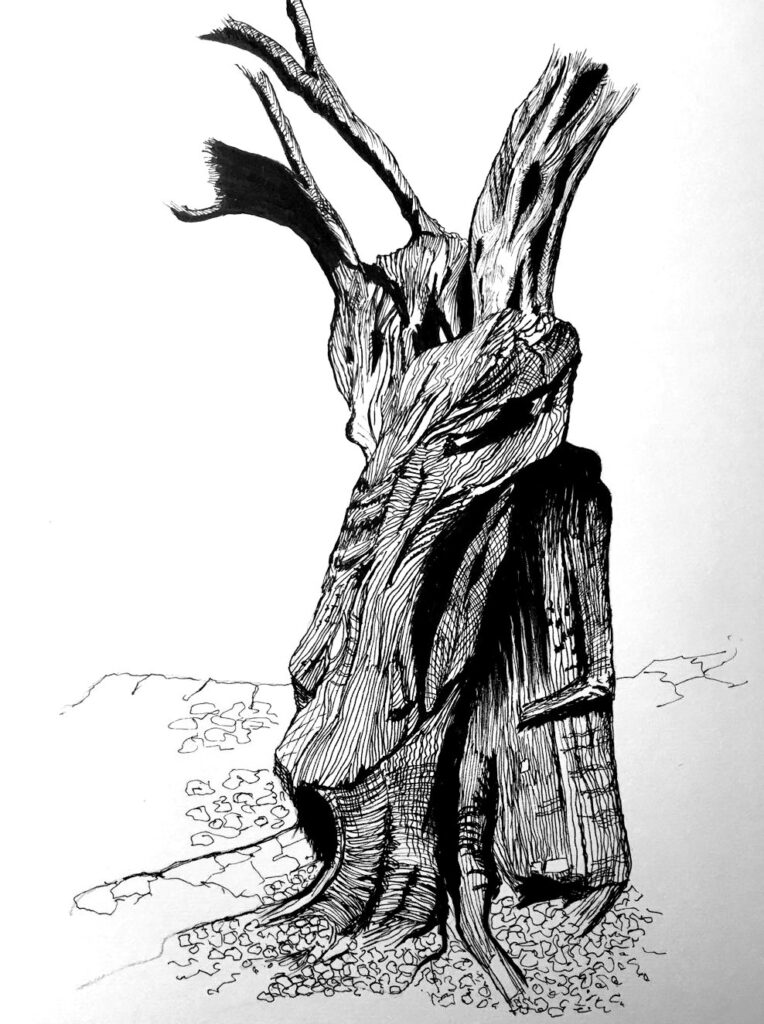
Black ink on white paper by heather
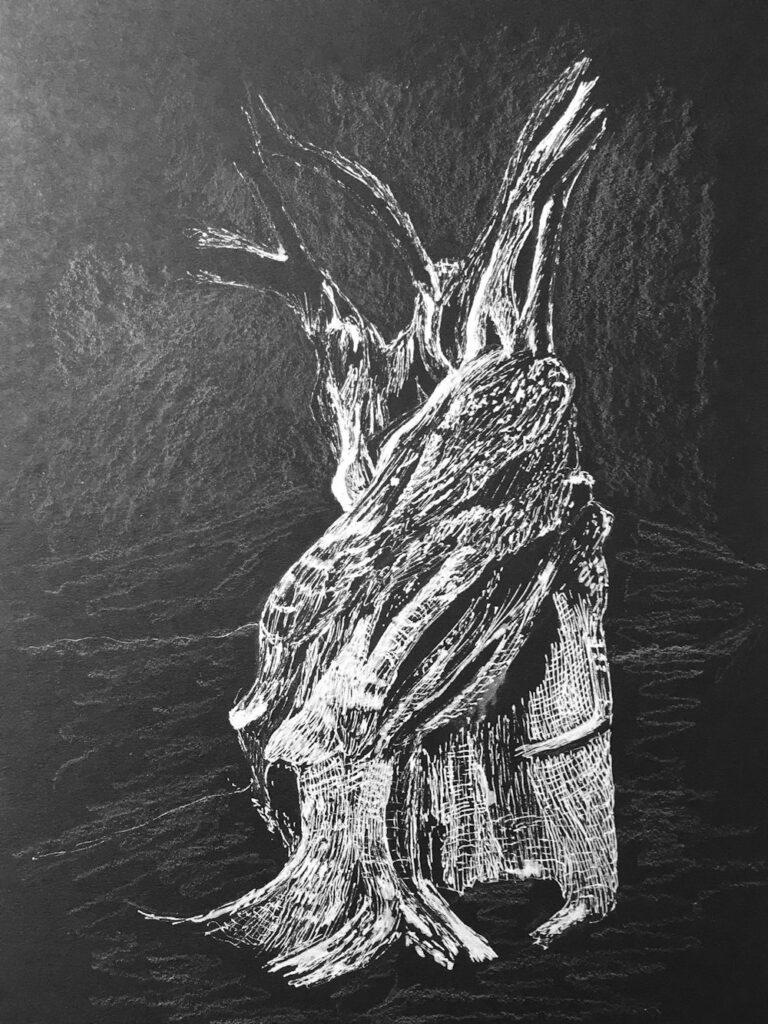
White ink on black paper by Heather

by Mali
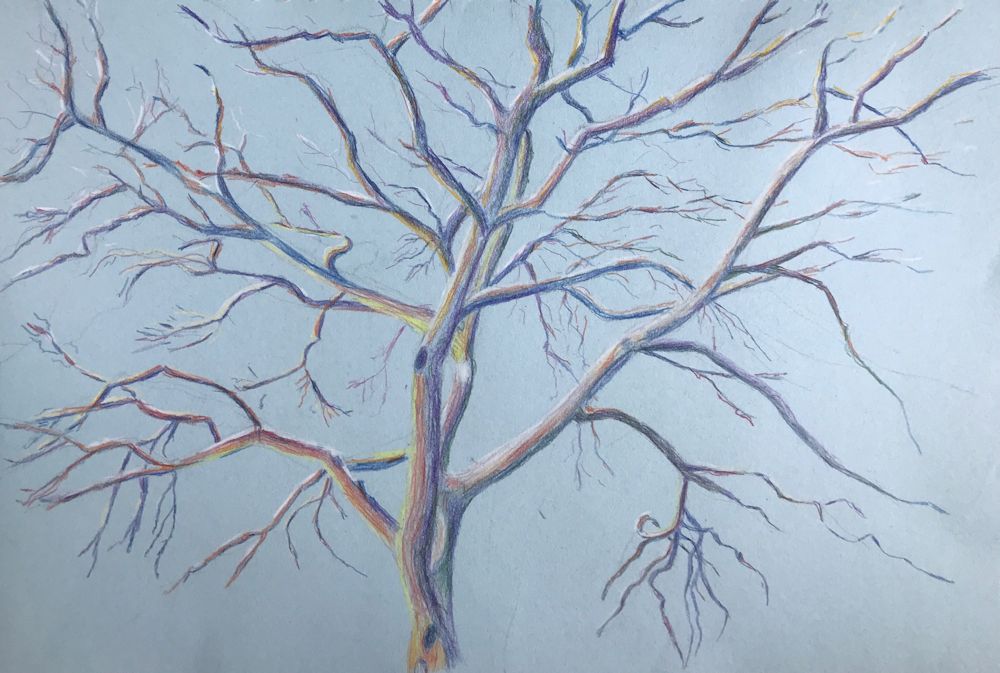
by Mali
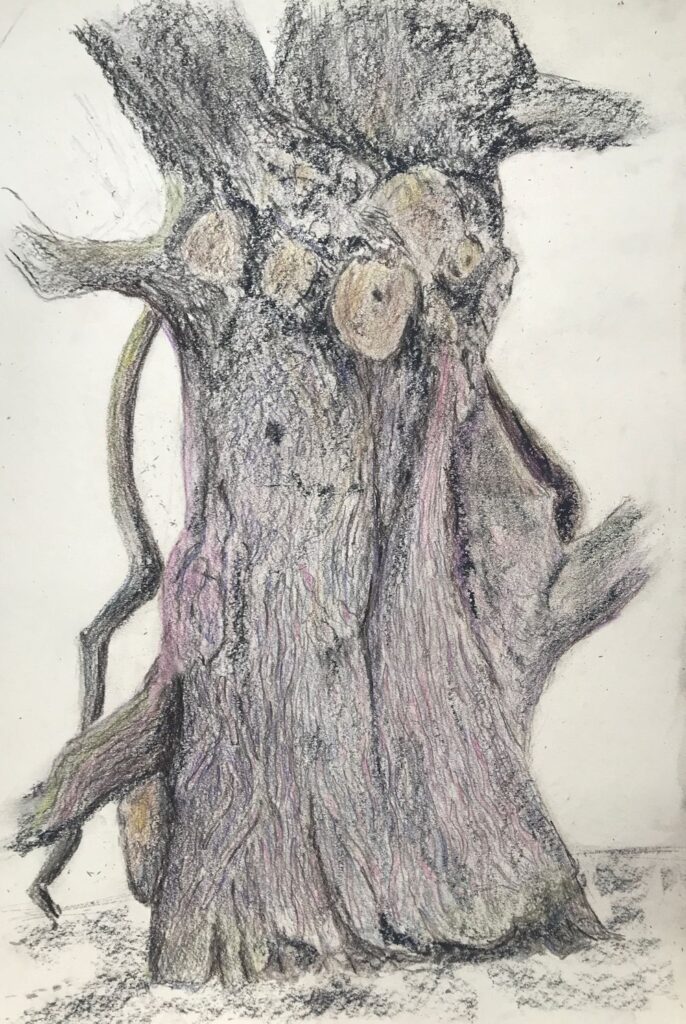
by Mali
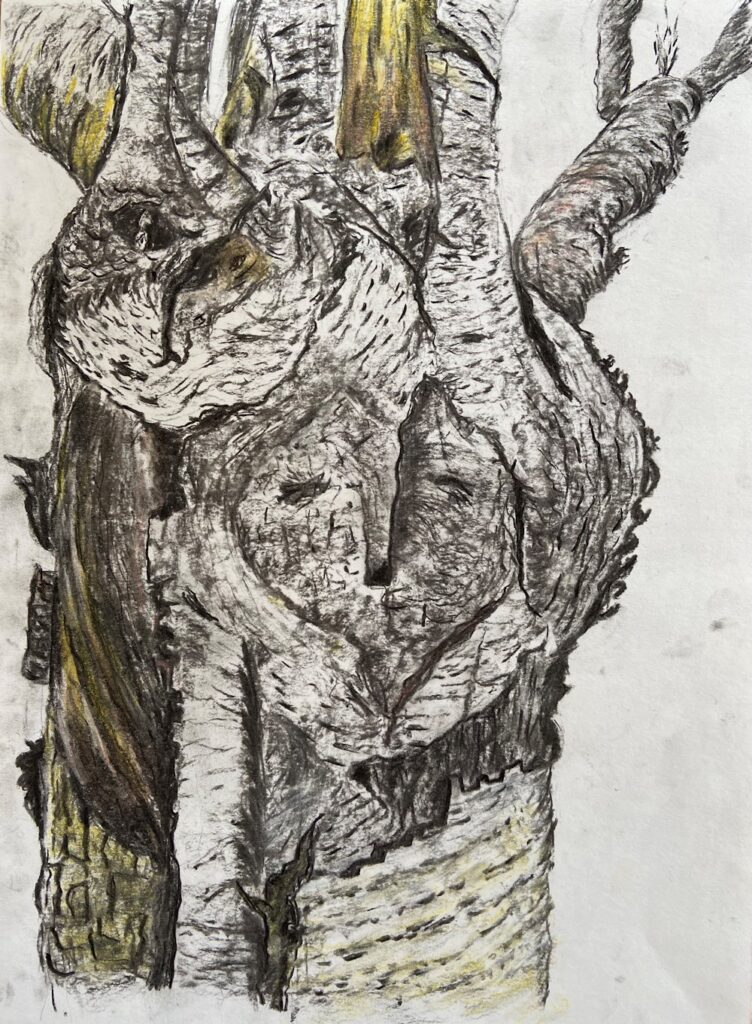
by Anne H
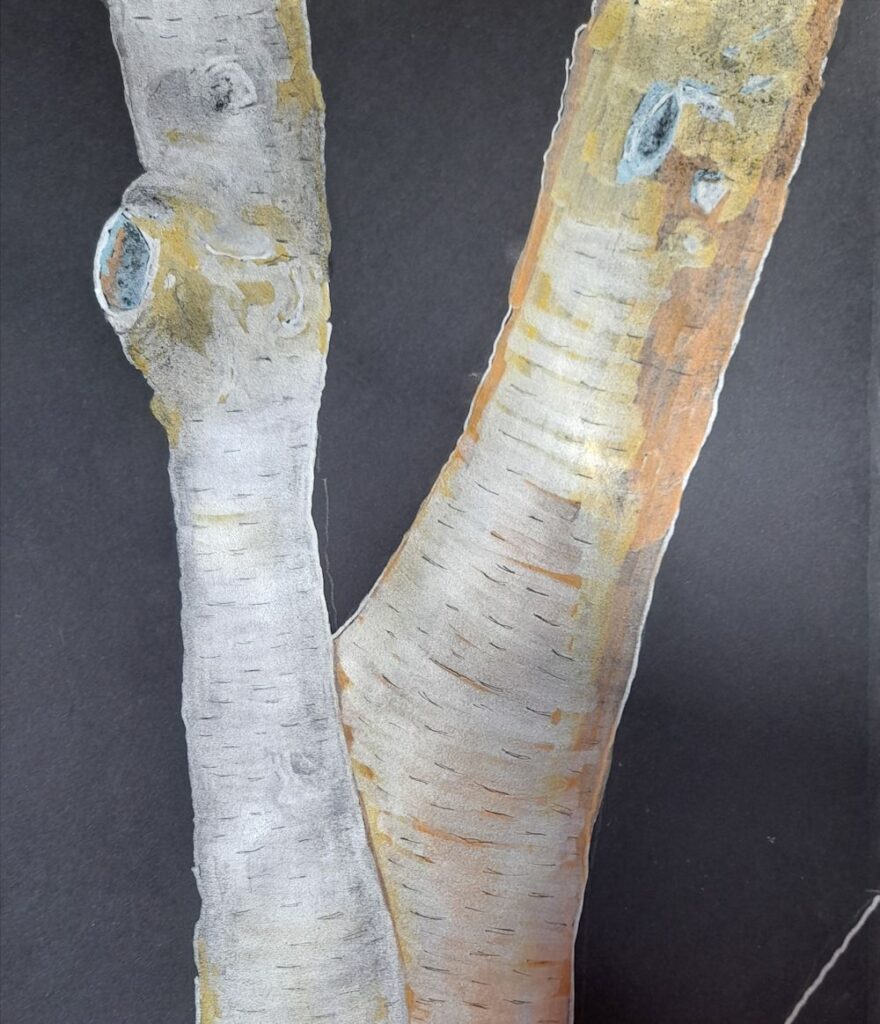
by Kate
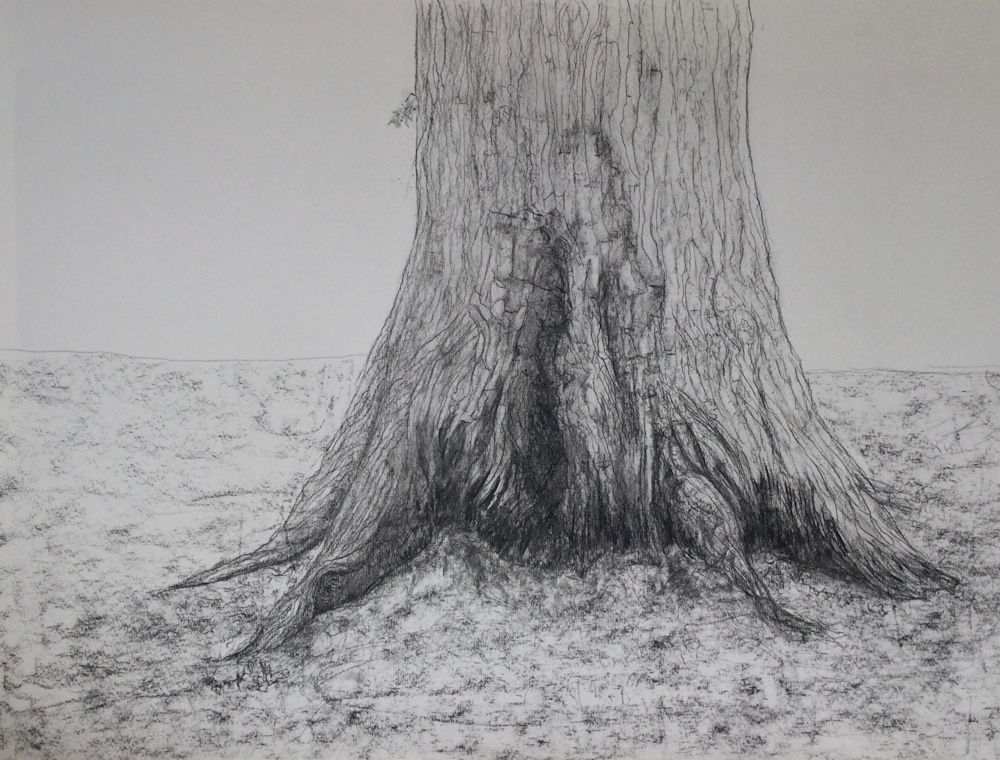
by Virginia
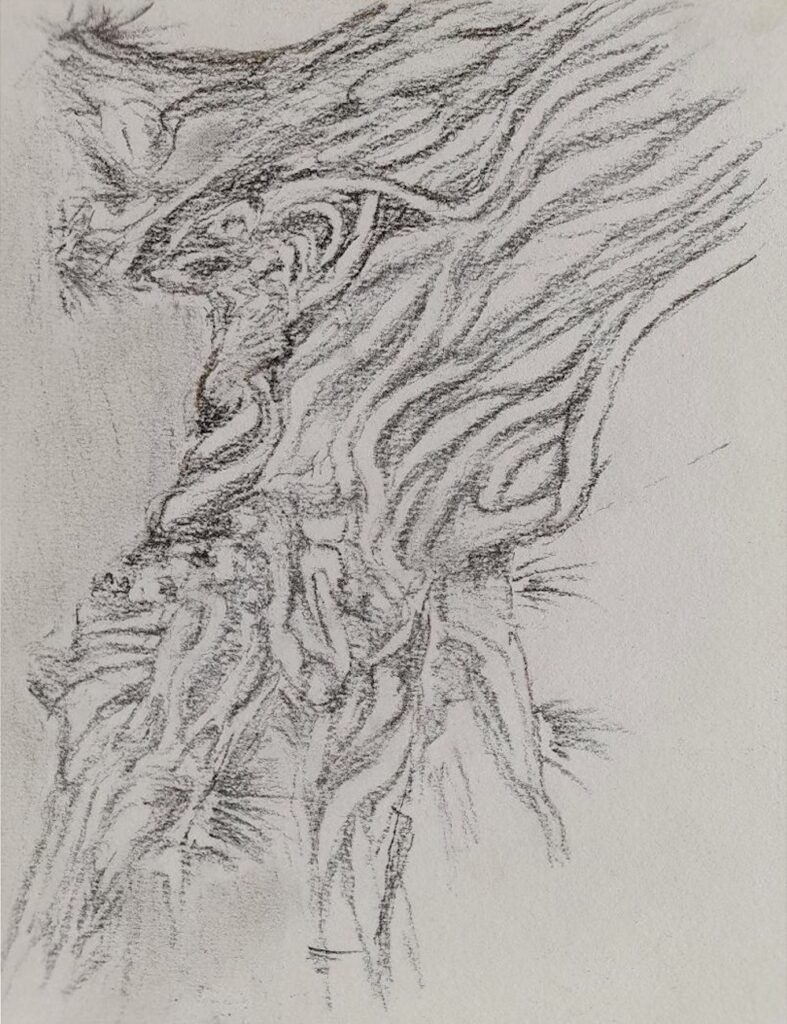
by Liz